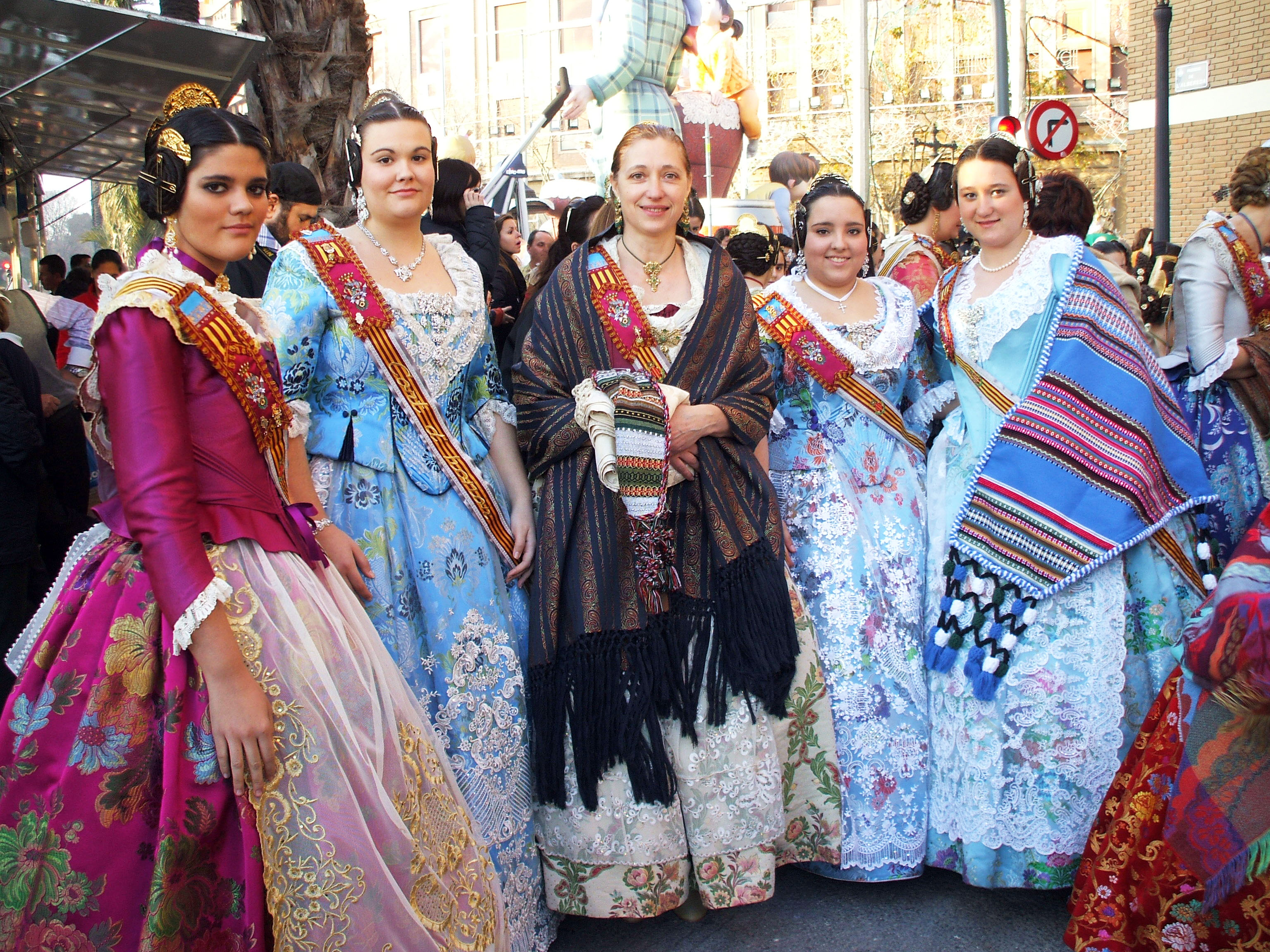|
Bonfires Of Saint John
The Bonfires of Saint John ( ca, Fogueres de Sant Joan, es, link=no, Hogueras de San Juan, gl, Fogueiras de San Xoán, ast, Fogueres de San Xuán, pt, Fogueiras de São João) are a traditional and popular festival celebrated around the world during Midsummer, which takes place on the evening of 23 June, St. John's Eve. It is customary in many cities and towns in Spain; the largest one takes place in Alicante, where it is the most important festival in the city. The biggest celebration in Portugal is held in Oporto, where it is known as the Festa de São João do Porto. In South America (former Iberian colonies), the biggest celebration takes place in the northeastern states of Brazil, where it is known as Festa Junina. The bonfires are particularly popular in many Catalan-speaking areas like the Valencian Community and Catalonia, and for this reason some Catalan nationalists regard 24 June as ''the Catalan nation day.'' History The festivals of Midsummer's Eve (St. John's Ev ... [...More Info...] [...Related Items...] OR: [Wikipedia] [Google] [Baidu] |
Midsummer
Midsummer is a celebration of the season of summer usually held at a date around the summer solstice. It has pagan pre-Christian roots in Europe. The undivided Christian Church designated June 24 as the feast day of the early Christian martyr St John the Baptist, and the observance of St John's Day begins the evening before, known as Saint John's Eve. These are commemorated by many Christian denominations, such as the Roman Catholic Church, Lutheran Churches, and Anglican Communion, as well as by freemasonry. In Sweden, the Midsummer is such an important festivity that there have been proposals to make the Midsummer's Eve the National Day of Sweden, instead of June 6. In Finland, Estonia, Latvia and Lithuania, Midsummer's festival is a public holiday. In Denmark and Norway, it may also be referred to as St. Hans Day. History Saint John's Day, the feast day of Saint John the Baptist, was established by the undivided Christian Church in the 4th century AD, in honour of th ... [...More Info...] [...Related Items...] OR: [Wikipedia] [Google] [Baidu] |
Paella
Paella (, , , , , ) is a rice dish originally from Valencia. While non-Spaniards commonly view it as Spain's national dish, Spaniards almost unanimously consider it to be a dish from the Valencian region. Valencians, in turn, regard ''paella'' as one of their identifying symbols. It is one of the best-known dishes in Spanish cuisine. The dish takes its name from the wide, shallow traditional pan used to cook the dish on an open fire, ''paella'' being the word for a frying pan in Valencian/Catalan language. As a dish, it may have ancient roots, but in its modern form, it is traced back to the mid-19th century, in the rural area around the Albufera lagoon adjacent to the city of Valencia, on the Mediterranean coast of Spain. ''Paella valenciana'' is the traditional paella of the Valencia region, believed to be the original recipe, [...More Info...] [...Related Items...] OR: [Wikipedia] [Google] [Baidu] |
Mantilla
A mantilla is a traditional Spanish and Latin American liturgical lace or silk veil or shawl worn over the head and shoulders, often over a high comb called a '' peineta'', popular with women in Spain, as well as in Latin America. It is also worn by Traditional Catholic and Plymouth Brethren women in various parts of the globe, Mennonite women in Argentina, and without the peineta by Eastern Orthodox women in Russia, often white, with the ends crossed over neck and draped over the opposite shoulder. For these denominations, the mantilla is worn as a Christian headcovering by women during church services, as well as during special occasions. A smaller version of the mantilla is called a toquilla. History The lightweight ornamental mantilla came into use in the warmer regions of Spain towards the end of the 16th century, and ones made of lace became popular with women in the 17th and 18th centuries, being depicted in portraits by Diego Velázquez and Goya. With Spain being larg ... [...More Info...] [...Related Items...] OR: [Wikipedia] [Google] [Baidu] |
Mascletà
A mascletà (pronounced in Valencian: askleˈta is a pyrotechnic event characterized by the achievement of a noisy and rhythmic composition that features, particularly during daytime, in street festivities; it is typical of the Valencian Community (Spain). It gets its name from the ''masclets'' (very loud firecrackers) that are tied by a wick to form a line or firework display. These are usually fastened at a medium height with ropes or raised by cannons. Unlike the fireworks that seek visual stimulation, the ''mascletades'' (pronounced in Valencian /maskle'taes/ and written in an informal way as ''mascletaes'') aim to stimulate the body through strong rhythmic sounds of ''masclets''; some people consider these sounds as "musical" sounds, while not neglecting the importance of the visual aspect. What distinguishes a mascletà from a succession of explosions is the rhythm that ''masclets'' must create to explode. It is essential that the force of the explosions must gradually ri ... [...More Info...] [...Related Items...] OR: [Wikipedia] [Google] [Baidu] |
Falles
The Falles ( ca-valencia, Falles; es, Fallas) is a traditional celebration held annually in commemoration of Saint Joseph in the city of Valencia, Spain. The five main days celebrated are from 15 to 19 March, while the Mascletà, a pyrotechnic spectacle of firecracker detonation and fireworks display, takes place every day from 1 to 19 March. The term ''Falles'' refers to both the celebration and the monuments (''Falla'', singular; ''Falles'', plural) burnt during the celebration. A number of towns in the Valencian Community have similar celebrations inspired by the original Falles de València celebration. The Falles festival was added to UNESCO's intangible cultural heritage of humanity list on 30 November 2016. Each neighbourhood of the city has an organised group of people, the ''Casal faller'', that works all year long holding fundraising parties and dinners, usually featuring the noted dish paella, a specialty of the region. Each ''casal faller'' produces a construction k ... [...More Info...] [...Related Items...] OR: [Wikipedia] [Google] [Baidu] |
Festival
A festival is an event ordinarily celebrated by a community and centering on some characteristic aspect or aspects of that community and its religion or cultures. It is often marked as a local or national holiday, mela, or eid. A festival constitutes typical cases of glocalization, as well as the high culture-low culture interrelationship. Next to religion and folklore, a significant origin is agricultural. Food is such a vital resource that many festivals are associated with harvest time. Religious commemoration and thanksgiving for good harvests are blended in events that take place in autumn, such as Halloween in the northern hemisphere and Easter in the southern. Festivals often serve to fulfill specific communal purposes, especially in regard to commemoration or thanking to the gods, goddesses or saints: they are called patronal festivals. They may also provide entertainment, which was particularly important to local communities before the advent of mass-produc ... [...More Info...] [...Related Items...] OR: [Wikipedia] [Google] [Baidu] |
John The Baptist
John the Baptist or , , or , ;Wetterau, Bruce. ''World history''. New York: Henry Holt and Company. 1994. syc, ܝܘܿܚܲܢܵܢ ܡܲܥܡܕ݂ܵܢܵܐ, Yoḥanān Maʿmḏānā; he, יוחנן המטביל, Yohanān HaMatbil; la, Ioannes Baptista; cop, ⲓⲱⲁⲛⲛⲏⲥ ⲡⲓⲡⲣⲟⲇⲣⲟⲙⲟⲥ or ; ar, يوحنا المعمدان; myz, ࡉࡅࡄࡀࡍࡀ ࡌࡀࡑࡁࡀࡍࡀ, Iuhana Maṣbana. The name "John" is the Anglicized form, via French, Latin and then Greek, of the Hebrew, "Yochanan", which means " YHWH is gracious"., group="note" ( – ) was a mission preacher active in the area of Jordan River in the early 1st century AD. He is also known as John the Forerunner in Christianity, John the Immerser in some Baptist Christian traditions, and Prophet Yahya in Islam. He is sometimes alternatively referred to as John the Baptiser. John is mentioned by the Roman Jewish historian Josephus and he is revered as a major religious figure Funk, Robert W. & t ... [...More Info...] [...Related Items...] OR: [Wikipedia] [Google] [Baidu] |
Bonfires
A bonfire is a large and controlled outdoor fire, used either for informal disposal of burnable waste material or as part of a celebration. Etymology The earliest recorded uses of the word date back to the late 15th century, with the Catholicon Anglicum spelling it as ''banefyre'' and John Mirk's ''Book of Festivals'' speaking of a communal fire in celebrations of Saint John's Eve that "was clene bones & no wode & that is callid a bone fyre". The word is thus a compound of "bone" and "fire." In 1755, Samuel Johnson misattributed the origin of the word as a compound of the French "''bon''" (“good”) and the English "fire" in A Dictionary of the English Language. Regional traditions In many regions of continental Europe, bonfires are made traditionally on 24 June, the solemnity of John the Baptist, as well as on Saturday night before Easter. Bonfires are also a feature of Walpurgis Night in central and northern Europe, and the celebrations on the eve of St. John's Day ... [...More Info...] [...Related Items...] OR: [Wikipedia] [Google] [Baidu] |
Castillo Sta Barbara
Castillo (Spanish for " castle") may refer to: People * Castillo (surname) Places Geography Dominican Republic * Castillo, Dominican Republic, a town in Duarte Province, Dominican Republic Nicaragua * El Castillo (municipality), a municipality in the Río San Juan department * El Castillo (village), a village in the Río San Juan department * Montealegre del Castillo, a municipality in Albacete, Castile-La Mancha Spain * Castillo, Álava, a village in the Basque Country * Castillo-Albaráñez, a municipality in Cuenca, Castile-La Mancha * Castillo de Garcimuñoz, a municipality in Cuenca, Castile-La Mancha * Castillo-Nuevo, a town in Navarre Man-made structures * Castillo de Chapultepec, palace on Chapultepec Hill, located in the middle of Chapultepec Park in Mexico City * Castillo de Guzman, castle in Tarifa, Spain * Castillo de Jagua, fortress near Cienfuegos Bay, Cuba * Castillo de San Marcos, old Spanish fort in St. Augustine, Florida, USA * El Castillo, Chichen I ... [...More Info...] [...Related Items...] OR: [Wikipedia] [Google] [Baidu] |

.jpg)

.jpg)




